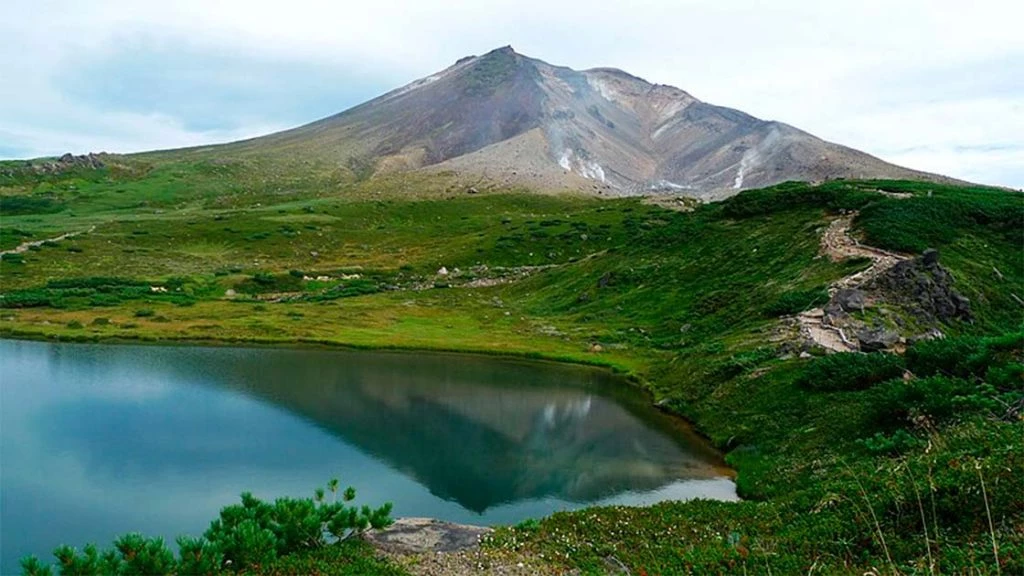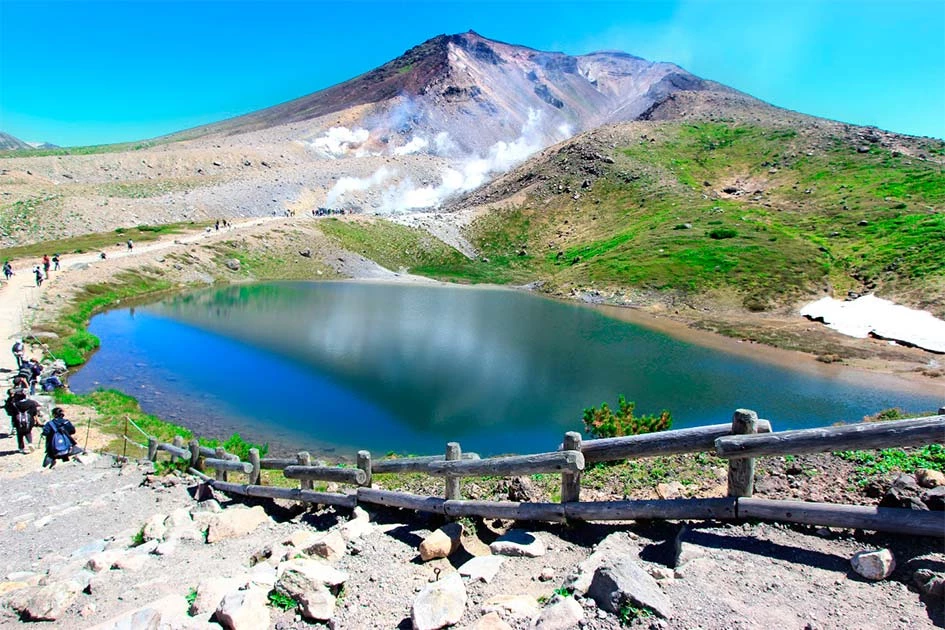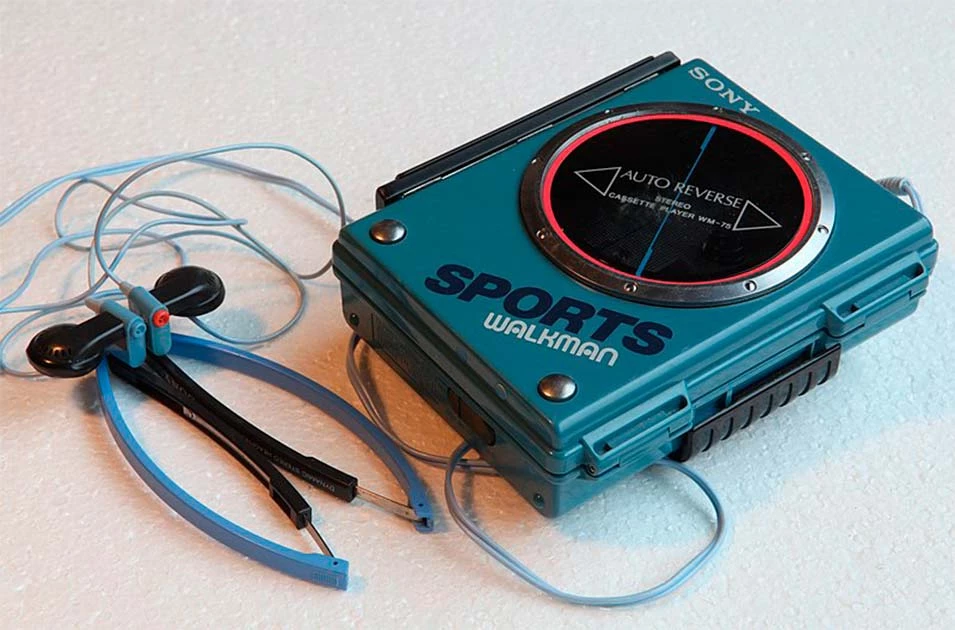Over the years mountaineering has become an increasingly popular hobby. Every year thousands of people take to the planet’s mountains to test themselves, take in the sights, and bask in nature’s beauty.
But mountaineering isn’t a hobby without risks. Mountaineers often get themselves into trouble and require a helping hand from the authorities.
These rescues can be perilous but have become fairly routine. Except in the case of the curious case of Kenji Iwamura and his SOS. What started out as a textbook rescue operation became something much stranger, puzzling Japanese authorities for decades.
Kenji Kawamura: Still Missing
Our story begins on the afternoon of 24 July 1989 in Daisetsuzan National Park, located in the center of the northern Japanese island of Hokkaido. Two men from Tokyo were mountaineering on the path from Mount Kurodake to Mount Asahidake when they became lost. Rather than following the path they turned around and started heading south, toward the Chubetsugawa River.
When the two men didn’t arrive as expected the alarm bell was raised and the Hokkaido police sent out a rescue helicopter to look for them. It was a large search area, especially since the two men had so deviated from their planned route but luckily the police soon came across a massive SOS sign made up of 19 birch trees, each roughly 5 meters (16 feet) long.

The police couldn’t see the men at the SOS site but found the two city slickers roughly 2-3 km (1-2 miles) north of the sign. The helicopter swooped down and picked them up. Another successful rescue for the Hokkaido police force. But then things took a strange turn.
Upon boarding the helicopter, the men were debriefed by the police. They were given food and water while one rescuer remarked how resourceful it had been of the two men to build such an impressive sign. The two Tokyo men had no idea what the officer was referring to.
The helicopter quickly circled back to show the rescuers the sign that had been their salvation. They had never seen it before. It was nothing short of a miracle that they had become lost so close to the pre-existing sign. A chilling realization then struck the police officers, someone else was stuck on the mountain and needed rescuing.
Unfortunately, it was too late in the day to send out another rescue team. The police just had to hope that whoever was stranded out in the mountains would survive until the following day. On the next day, July 25th, 1989, a second search and rescue operation began. The SOS was around 4 km (2.5 miles) from the summit of Mount Asahidake, and the police searched the area thoroughly.
A Chilling Discovery
The police found numerous human bone fragments close to the SOS site, most of them with traces of animal bites. Some of these bones were broken, perhaps while the person was alive, giving police a clue as to their ultimate fate.
- Ogre in the Alps: Defeating the Eiger’s North Face
- Colter’s Run: The Legendary Mountain Man’s Escape from Certain Death
As the police continued to search, they made another macabre discovery. In a hole near the SOS, just big enough to squeeze in a single person, they found an abandoned backpack.
In the bag were four cassette tapes, a tape recorder, some jewelry, a tripod, a pair of men’s basketball shoes, two cameras, and a notebook. There was also a human skull, and a driver’s license belonging to a 25-year-old male called Kenji Iwamura.

Police soon learned that Kenji was an office worker from Konan in the Aichi Prefecture. He had gone missing five years earlier on 10 July 1984 after setting out on a hiking trip in the region. The alarm had been raised a week later when he had failed to turn up for work. Police had searched for him at the time, but he had disappeared without a trace.
Unsurprisingly, police concluded that the bones and skull they had found belonged to poor Kenji. The remains were sent to Asahikawa Medical University where the case took another unexpected turn. Medical examiners identified the bones as belonging to a woman 20-40 years of age.
It was at this point the Hokkaido police decided to play the cassette tapes they had found, hoping they held some clues as to what had happened. On one tape they found a recording of a young man who can be heard shouting for 2 minutes and 17 seconds, he can be heard saying:
“SOS, help me, I can’t move on the cliff, SOS, help me.
The place is where I first met the helicopter. The sasa [a type of bamboo plant] is deep and you can’t go up. Lift me up from here.”
Officers were a little surprised to discover the other tapes featured music from various popular anime tv shows, including Magical Princess Mink Momo. However, upon interviewing an acquaintance of Iwamura they learned that the young man had been carrying tapes of anime themes tunes at the time. The same person also stated the basketball shoes were the correct size.
Officers also consulted the Japan Forestry Agency and the Japan Geographical Authority. Both agencies looked at old topographic map data and found aerial photographs that confirmed the SOS sign had been on the mountainside since at least 20 September 1987, perhaps earlier.
Things were beginning to line up, but the officers still had the human remains to explain. Not only was the skeleton said to be that of a woman, not a 25-year-old male but medical examiners were also claiming the bones may belong to more than one person. Investigators now believed that two men and a woman had gone missing at the park.
But they only had Iwamura’s belongings to work with. There was also no record of a missing woman and those who knew Iwamura said he would have gone hiking alone. Who was this woman and what was her relationship with Iwamura? This question caused much confusion for the investigation and a lot of speculation from the media.

Finally, on 28 February 1990, it was announced that the bones had been re-examined. The police now believed they belonged to one skeleton, which was actually male, not female. Most likely Kenji Iwamura had died on the mountainside and the skeleton was his. The case was near enough closed.
Unanswered Questions
This doesn’t mean everyone was satisfied with the police force’s final conclusion. There are still a handful of questions that, to this day, some people believe don’t believe have satisfactory answers.
- Bizarre Disappearance of Keith Reinhard in Silver Plume, Colorado
- The Strange Case of the Isdal Woman
Ironically, the biggest concern is who made the SOS sign. The letters were made by stacking large, heavy fallen birch trees, and experts estimate it would have taken two days and incredible effort to make such a large sign.
The problem is it’s hard to believe Kenji Iwamura would have been able to build such a sign. After an autopsy of the skeleton, examiners referred to its owner as thin and weak, declaring there was no way he would have been able to make the sign on his own. It has also been pointed out that no axe was ever found at the site either.
There’s also the fact that examiners believed the bones were fractured prior to death, most likely from falling from a great height. This makes it seem even more unlikely that Iwamura made the sign on his own. Unless he built it, grew tired of waiting, and then tried to climb to safety and fell.
The final mystery revolves around the tape recording. It’s been speculated that the man on the recording was attempting to record himself so that if he became too weak to speak, he could play the recording for any potential rescuers. Perhaps he accidentally left it on, recording his final pleas for help.
It’s widely believed the man on the recording is Iwamura, but his parents aren’t so sure. After the tape was played for them, they were unable to confirm or deny that it was their son’s voice on the tape.
A Missing Explanation
So, what happened to Kenji Iwamura? The most likely explanation seems to be that he was hiking alone, got lost, and managed to build his SOS sign before succumbing to his injuries and the elements. As for the doubts surrounding his ability to build the sign? Desperate people are capable of amazing things.
Sadly, we’ll likely never know for sure what happened to him though. Whether he was alone or not, whether his death was an accident or something more sinister. Could it be that he went up the mountain with someone else, but they left him up there to die? Stranger things have happened.
But in the end, often the most reasonable answer is the correct one. Poor Kenji Iwamura went up the mountain alone and most likely he died up there alone. A warning to other mountaineers to take their hobby seriously.
Top Image: Kenji Iwamura’s SOS sign did indeed lead to a rescue. But it could not save him. Source: Peter Kim / Adobe Stock.